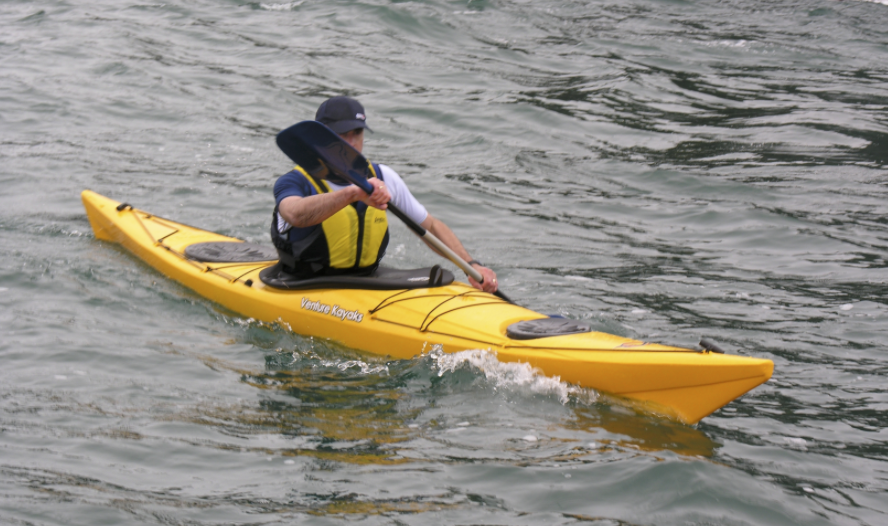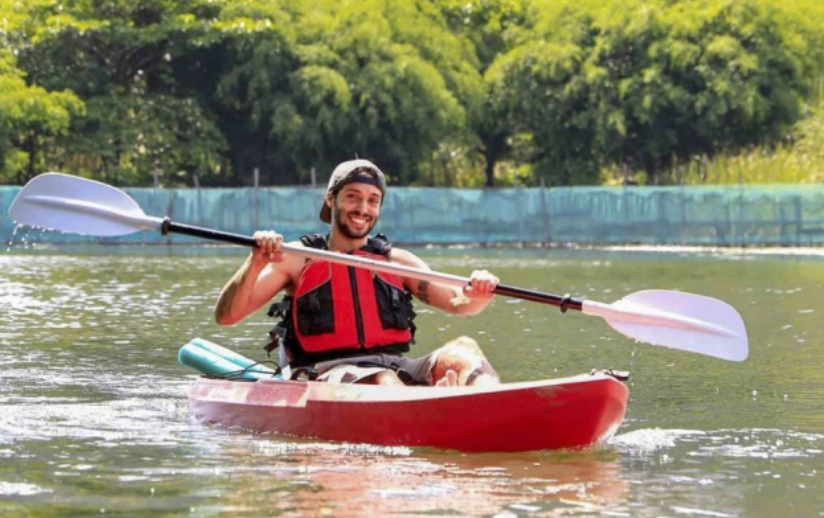The compartment is usually as deep as the sum of the circumference of a human fist and the length of the thumb. As a result, the average kayak is 17 feet (5.2 meters) long, 20-22 inches (50 – 56 cm) wide, and 7 inches (18cm) deep.
2. Modern kayak
Through thousands of years of changes in human society, kayaks also have many improvements in terms of materials and designs. The core of the boat was replaced from wood to fiberglass, inflatable rubber (1950), Rotomolded plastic (1973), and finally the most popular material available today for kayaks including Poletheylene roto-cast.
Not only relying on manpower, but some types of kayaks nowadays are also equipped with an engine that enables the boat to push itself on the water or replace the paddle with mini fans operated by the pedal on the boat.

When participating in kayaking, you will feel the coolness of the water waves, the freshness of heaven and earth. The feeling of being in the midst of immense and open nature is worth trying, right?
Relieving stress
After stressful working days, what is better than the feeling of waving in the middle of a large river area? Traveling around on beautiful small kayaks, you will not only reduce this long-accumulated stress of yourself but also have the opportunity to experience new, adventurous, and energetic feelings. That is also the reason why kayaking is gradually becoming a thrilling water sport that many young people love.
Training perseverance and courage
Only when you climb on a kayak and paddle it do you feel it. Water waves are not always quiet, and you have to get used to unexpected situations that might arise.
This helps you to have the opportunity to sharpen your senses, to forge courage, calmness, and courage. Because if you are always afraid and easily panic, you will not be able to conquer these beautiful kayaks.


